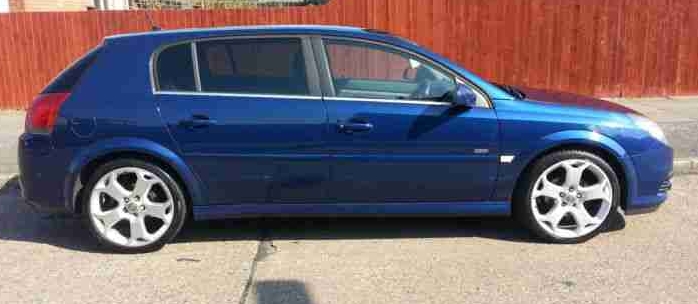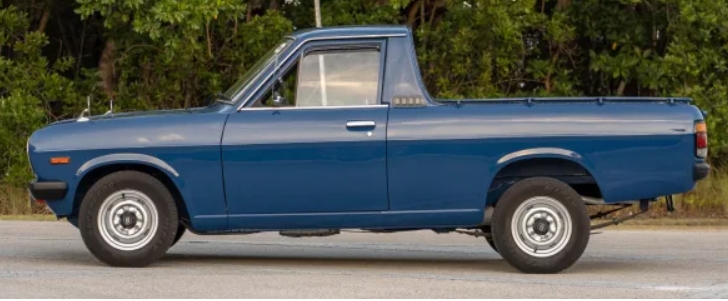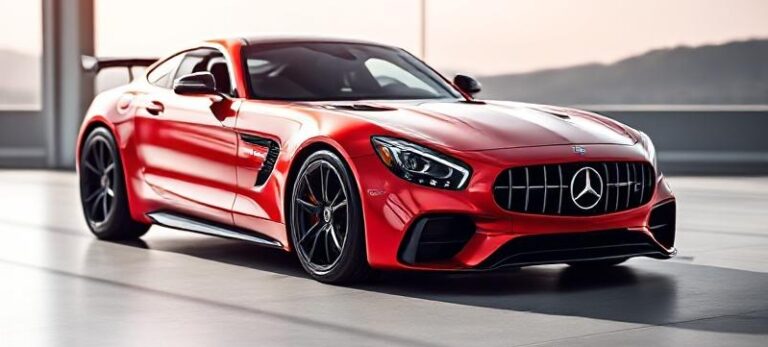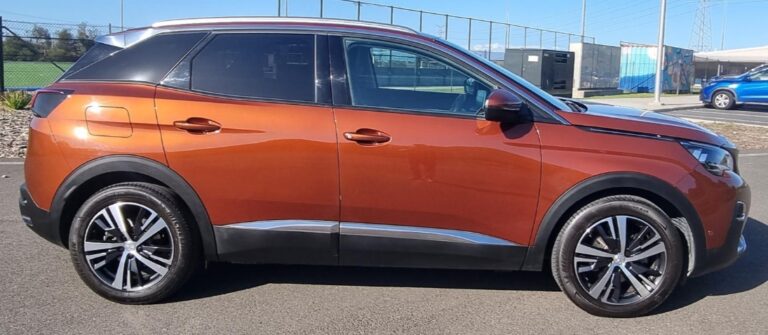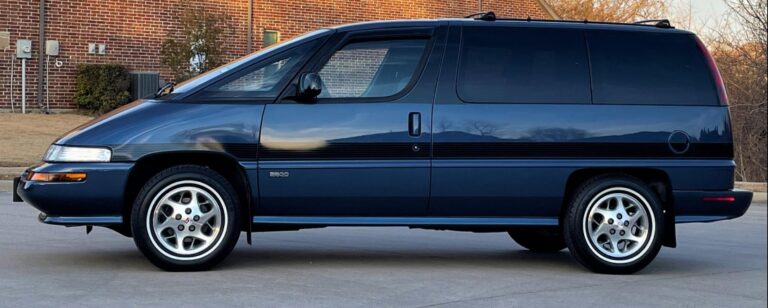The Vauxhall Signum: A Bold Bet on Spaciousness and Style
In the automotive landscape, certain models stand out not just for their sales figures or enduring legacy, but for their audacious departures from the norm. The Vauxhall Signum, produced between 2003 and 2008, is one such car. It was a brave and ultimately bittersweet attempt by Vauxhall (and its parent company Opel on the continent) to redefine the executive hatchback, offering a unique blend of spaciousness, comfort, and a distinctive silhouette that dared to be different. While it may not have achieved the widespread commercial success of its more conventional siblings, the Signum carved out a niche for itself, appealing to a specific breed of driver who valued practicality without compromising on a touch of individuality.
The genesis of the Signum can be traced back to the early 2000s. Vauxhall, seeking to expand its range and capture a segment of the market looking for something more than a standard saloon or estate, decided to build upon the platform of the popular Vectra. The result was the Signum, officially launched in 2003. It wasn’t simply a stretched Vectra hatchback; it was a fundamentally different proposition, designed with a focus on rear-seat passenger experience and a more premium feel.
The Signum’s most defining characteristic was its extended wheelbase and the unique “three-box hatchback” design. Unlike the conventional Vectra hatchback, the Signum featured a more upright rear, a longer roofline that flowed into a distinct boot lid, and a substantial increase in rear legroom. This created an interior that could rival some executive saloons, particularly in terms of stretching out and relaxing on longer journeys. Vauxhall marketed it as a “hatchback estate” or an “executive car,” a deliberate attempt to position it as a versatile and sophisticated option.
Models and Trim Levels: A Spectrum of Sophistication
Throughout its production run, the Vauxhall Signum was offered with a range of engines and trim levels, catering to different needs and budgets. The initial launch in 2003 saw a selection of petrol and the popular diesel engines that would become the backbone of its offering.
Initial Launch Engines (2003 onwards):
1.8i 16v (125 PS): The entry-level petrol engine, offering a balance of economy and performance for everyday driving.
2.2i 16v (155 PS): A more powerful petrol option, providing a noticeable step up in acceleration.
2.6 V6 24v (180 PS): The flagship petrol engine for the initial launch, offering smoother power delivery and a more refined driving experience.
2.0 DTi 16v (100 PS): A strong diesel offering, known for its fuel efficiency and torque.
2.2 DTi 16v (125 PS): A more potent diesel, providing better performance while retaining good economy.
Initial Trim Levels (2003 onwards):
Vauxhall typically offered its models in a tiered trim structure, and the Signum was no exception. While specific names could vary slightly by market or model year updates, the core levels generally included:
Life: The entry-level trim, offering essential features and a good foundation of comfort and safety. This would typically include features like electric front windows, remote central locking, and a basic audio system.
Club: A step up from Life, the Club trim added more creature comforts, such as air conditioning, alloy wheels, and an upgraded interior trim.
Elite: Positioned as the more luxurious option, Elite models boasted premium features like leather upholstery, heated seats, climate control, and more advanced infotainment systems.
Evolution and Updates
The Signum, like most cars, benefited from periodic updates and facelifts to keep it competitive.
2004: A significant addition to the engine line-up was the introduction of the powerful 3.2 V6 24v (211 PS) engine, offering a true performance variant for those seeking exhilaration. This engine was often paired with the higher trim levels for a more premium feel.
2005 Facelift: This was a crucial year for the Signum. Vauxhall introduced a significant facelift that brought the styling more in line with the updated Vectra range. The front grille, headlights, and bumpers were revised, giving the Signum a more modern and assertive appearance. The interior also received subtle enhancements, with improved materials and updated infotainment options.
The 2005 facelift also saw a streamlining and enhancement of the engine and trim offerings.
Post-Facelift Engines (from 2005):
1.8i 16v VVT (140 PS): An updated version of the 1.8-litre petrol engine, now with Variable Valve Timing (VVT) for improved efficiency and power.
2.0 Turbo 16v (175 PS): This engine effectively replaced the 2.0 DTi as a strong performance option, offering significantly more power and a more refined experience, especially in OPC/VXR guise.
2.8 V6 Turbo (230 PS initially, later 250 PS): This was the powerhouse engine for the Signum, particularly in the performance-oriented VXR (Vauxhall Racing) and OPC (Opel Performance Center) variants. The VXR model, launched in 2006, was the pinnacle of Signum performance, offering a thrilling driving experience with a sporty chassis and aggressive styling.
1.9 CDTi 16v (120 PS and 150 PS): These were the new generation of diesel engines, offering improved performance, efficiency, and refinement over the older DTi units. The 150 PS version, in particular, became a very popular choice.
2.0 CDTi 16v (130 PS): Another efficient and capable diesel option.
2.2 direct (177 PS): A direct-injection petrol engine offering a good blend of power and economy.
Post-Facelift Trim Levels (from 2005):
The trim structure remained broadly similar, but with enhanced features and some new names or configurations:
Life: Still the entry point, but likely with more standard equipment than the pre-facelift version.
SXI: Often positioned as a sportier mid-range option, the SXI typically included more aggressive styling elements, sports seats, and upgraded interior trim.
Elite: Continued to represent the pinnacle of comfort and luxury, with a comprehensive list of standard features.
Design: Introduced as a variant that emphasized style and premium appointments, often bridging the gap between SXI and Elite.
VXR (from 2006): The dedicated performance trim, featuring unique styling, sports suspension, larger wheels, and bespoke interior appointments.
The Signum’s Unique Selling Proposition: Rear-Seat Serenity
While the front offered a comfortable and well-equipped driving environment, the Signum truly shone in the rear. The extended wheelbase translated into colossal legroom, allowing even tall adults to travel in absolute comfort. Vauxhall cleverly capitalized on this by offering optional rear-seat packages that elevated the experience further.
These could include:
Individual Rear Seats: Instead of a bench, some Signums featured two sculpted, individual rear seats, reminiscent of a limousine. These often came with their own armrests and enhanced adjustability.
Rear Entertainment Systems: For families or those who valued passenger comfort above all else, optional screens and audio controls could be integrated into the rear.
Climate Control Zones: Higher trim levels often offered sophisticated climate control systems that allowed rear passengers to adjust their environment independently.
This focus on rear-seat luxury was a key differentiator. It appealed to business executives who might be chauffeured, or families who wanted to ensure their passengers enjoyed every journey.
.

.
The End of an Era: 2008
Despite its innovative approach and unique strengths, the Vauxhall Signum struggled to gain significant traction in a market increasingly dominated by SUVs and more conventional saloons and estates. Its distinctive styling, while appealing to some, was perhaps too unconventional for the mainstream. Production of the Signum officially ceased in 2008. It was not directly replaced, with Vauxhall relying on the improved Vectra hatchback and estate, and later the Insignia, to cover the executive and family car segments.
Legacy of the Signum
The Vauxhall Signum remains a fascinating footnote in Vauxhall’s history. It was a car that dared to be different, prioritizing passenger space and comfort in a way few others did in its class. While its sales numbers may not have set the world alight, it found loyal fans who appreciated its unique blend of practicality, refinement, and understated luxury. For those who experienced its cavernous interior and comfortable ride, the Signum was more than just a car; it was a sanctuary on wheels, a bold statement that sometimes, the road less travelled can lead to a truly special destination. Today, the Signum is a cult classic, sought after by those who understand its unique virtues and appreciate its departure from automotive conformity.
